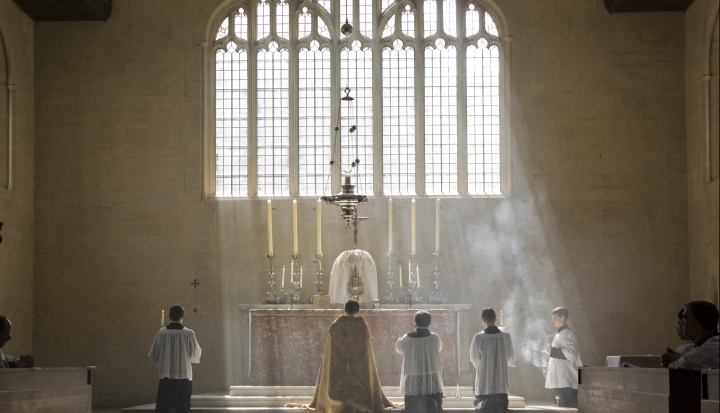What do you think of when you hear the word pray? The Lord’s Prayer? Praying before meals? Chances are, it has something to do with words or speaking. But prayer isn’t always about language. Picture, for example, the incense used at Mass—mostly during the entrance procession, at the proclamation of the gospel, at the offertory, or at the elevation of the Eucharist after the consecration. The smoke wreathes around the offering and ascends into heaven. The scent of frankincense starts in the front of the church but eventually permeates to the back row. This is prayer of a different sort, prayer that helps us understand faith differently. Our prayers rise up to heaven, like the incense. And like the incense, what is holy permeates the world around us.
The use of incense goes back to biblical times: It was a major part of Israelites’ religious practice in the Temple. The book of Revelation talks about angels using incense to offer prayers to God (Rev. 8:3–5). But the use of incense was not present in early Christian practices. It was often used in pagan sacrifices, and it was part of honoring the emperor as a deity. Thus, Christians avoided using it in their own religious celebrations. It wasn’t until the 4th or 5th century that incense started being used again in ordinary Christian worship.
Many theories have been put forth about why Christians—and before them, Jews—started using incense as part of their religious practice. A popular view in the late 1800s argued that it was simply meant to cover smells and prevent disease. More modern views suggest that it is because incense remembers a time when burnt sacrifices were a part of religious expression, that it symbolizes the incorruptibility of God (the resin that is burned will never go bad), or that through the transformation of resin to smoke, it illustrates the transformation from body to soul.
No matter what the symbolic meaning of incense might be, it is not surprising that it has become such a prominent part of Catholic liturgy. We view the crucifix, we make the sign of the cross with holy water, we listen to hymns. And we smell the incense. Catholics call these sacramentals—sacred signs that hint at the nature of God. The Modern Catholic Encyclopedia states, “There are moments of breakthrough, special memories and associations that help [us experience everything in relationship to God].” Catholics believe that the world people experience with their five senses points to God’s presence. Instead of being separate from it, God is in the world.
Incense is a perfect example of this; it reminds a congregation that the entire world is sacred. Both seen and smelled, incense connects our senses to our lives as people of faith. Every time we go to Mass, we are reminded that the distinction between what is holy and what is not is blurry.
This article appeared in the September 2015 issue of U.S. Catholic (Vol. 80, No. 9, page 46).
Image: Flickr cc via Lawrence OP















Add comment